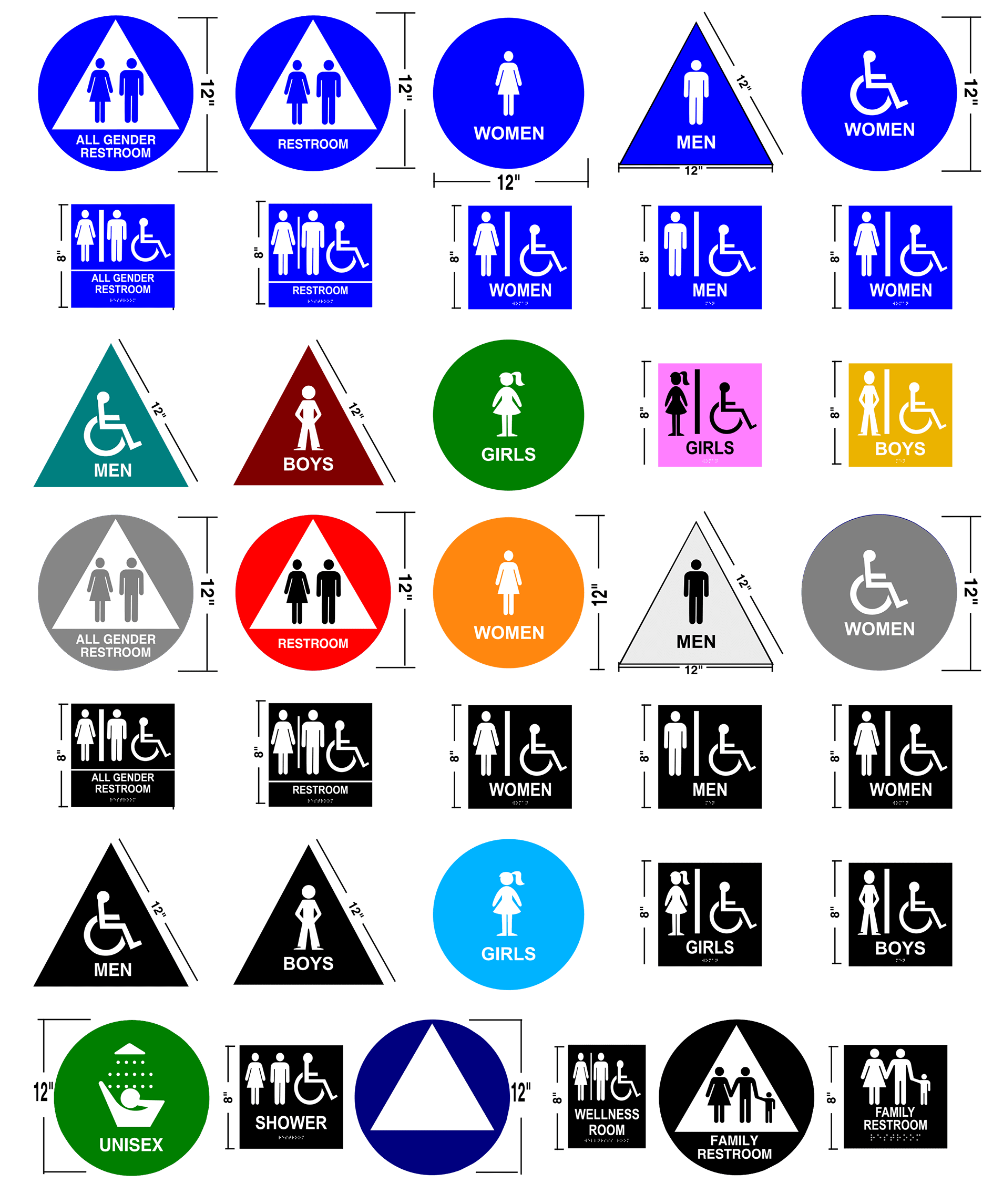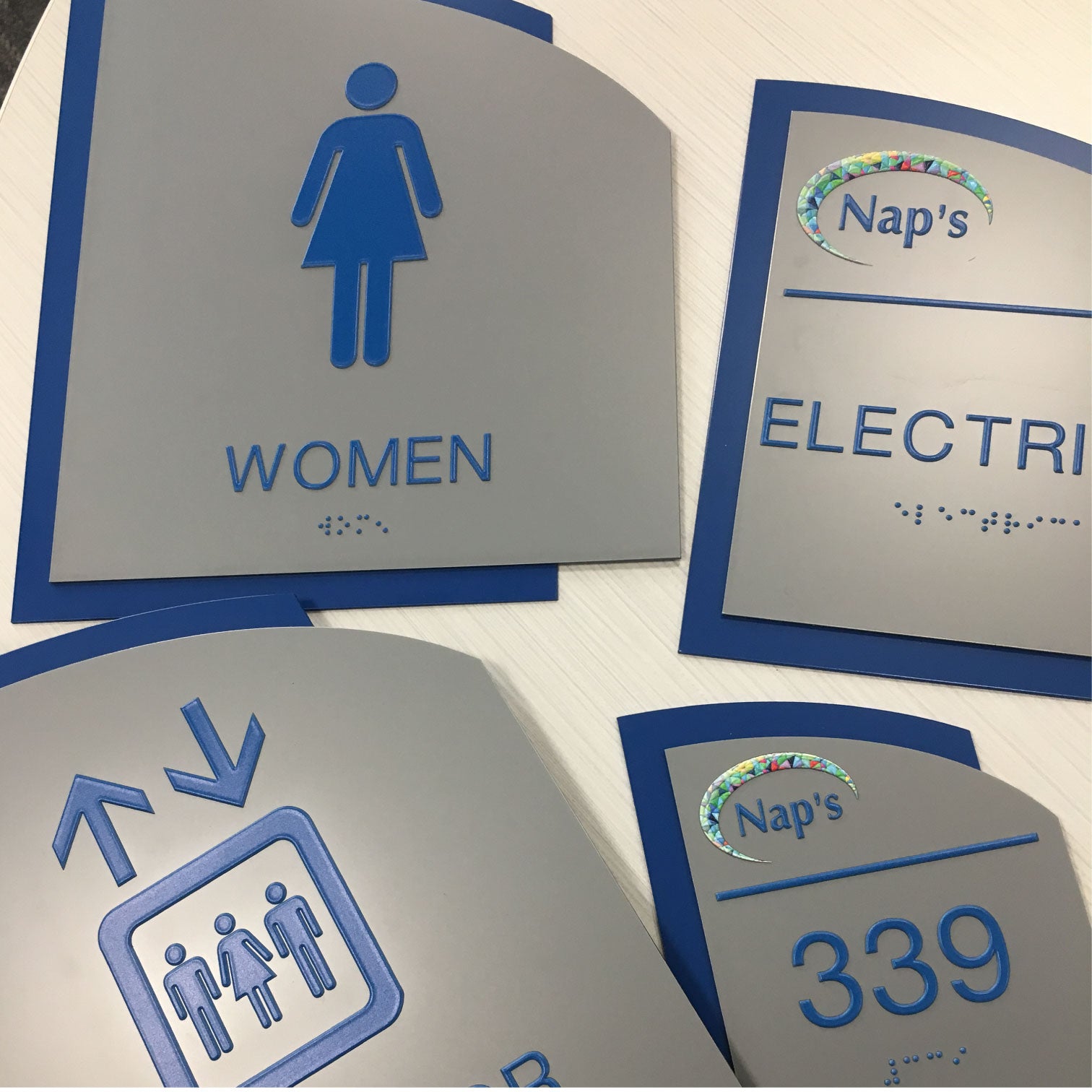Recognizing the Laws Behind ADA Signs
Recognizing the Laws Behind ADA Signs
Blog Article
Exactly How ADA Indicators Change Rooms for Individuals With Handicaps
The improvement of spaces with ADA indicators for people with disabilities is a profound testament to the power of access. By sticking to ADA compliance, settings end up being navigable and secure, with indications that function vital components like high-contrast shades and Braille, therefore improving exposure and comprehension. Past plain functionality, these signs contribute to area addition, providing a feeling of empowerment and belonging. As we look in the direction of future fads in easily accessible signage, one need to consider just how progressing technologies might further transform these areas. What obstacles and possibilities exist ahead in making sure these rooms stay comprehensive for all?

Relevance of ADA Compliance
Ensuring ADA conformity is not just a lawful commitment however also a social commitment to inclusivity and availability. By sticking to the guidelines established forth in the Americans with Disabilities Act (ADA), organizations demonstrate their commitment to creating environments where individuals with impairments can navigate and involve without barriers. ADA compliance is critical in eliminating discrimination, cultivating equality, and promoting independence for individuals with specials needs.
Organizations and public institutions benefit dramatically from ADA conformity. It helps them stay clear of lawful fines and enhances their credibility by showcasing their commitment to diversity and inclusion. Additionally, by guaranteeing centers are available to everyone, organizations can bring in a more comprehensive client base, including the 61 million Americans living with handicaps. This inclusivity expands beyond mere conformity, mirroring an aggressive stance in the direction of availability.
Additionally, ADA conformity is a keystone of global layout, which stresses creating rooms that accommodate all individuals, despite their abilities. By carrying out certified signage and functions, companies add to an extra fair society, where all participants can participate totally. Ultimately, ADA compliance goes beyond legal obligation, symbolizing a societal worth that prioritizes empowerment and equivalent possibility for everyone.
Enhancing Navigation and Safety And Security
Navigating rooms with self-confidence and security is important for people with specials needs, and ADA-compliant signs plays a crucial function in attaining this goal. These indicators are developed with details attributes to accommodate the varied demands of people with numerous specials needs, consequently promoting smoother and more secure navigating throughout public and private areas. By offering clear, standardized information, ADA signs lessen confusion and advertise a higher sense of freedom for individuals who rely upon them.
The tactical positioning of ADA indicators makes sure that important details comes to everyone, consisting of those with visual, auditory, or cognitive disabilities. For example, tactile and Braille components on signs help visually impaired individuals independently situate leaves, toilets, and various other key areas. In emergency situation situations, ADA signs add to efficient emptyings by clearly marking emergency leaves and courses, hence enhancing safety and security for all passengers.
Furthermore, ADA-compliant indications cultivate a comprehensive atmosphere by resolving the distinct navigation challenges encountered by individuals with impairments. This not only help in their individual safety and security but additionally urges involvement in societal activities by advertising equal access to public services and centers. Ultimately, reliable ADA signage transforms rooms right into obtainable, secure, and inviting atmospheres for everyone.
Functions of Efficient ADA Indications
To produce effective ADA signs, it is vital to integrate specific functions that resolve the diverse access demands of individuals with disabilities. One crucial feature is making use of high-contrast colors, which significantly enhance visibility for people with visual impairments. The background and message ought to contrast sharply to make sure the anchor info is easily discernible. In addition, the text should be in a sans-serif font, as these fonts supply clearer readability at a range.
One more crucial feature is tactile elements, such as increased personalities and Braille, assisting in access for aesthetically damaged people. The elevated personalities must be at least 1/32 inch above the surface, permitting very easy touch reading. Braille should be positioned straight below matching message, guaranteeing consistency and simplicity of navigation.
The positioning read review of ADA indications is also essential for their effectiveness. By integrating these attributes, ADA signs can significantly improve wayfinding and availability for all.
Effect On Neighborhood Addition
ADA signs dramatically add to community addition by ensuring that public spaces are accessible and navigable for individuals with specials needs. These signs, designed in conformity with the Americans with Disabilities Act (ADA), attribute responsive aspects, braille, and high-contrast shades, helping not just those with aesthetic problems but a varied series of specials needs - ADA Signs. Consequently, they play a crucial function in developing atmospheres where people with impairments can participate fully and individually in community life

Furthermore, ADA indicators assist businesses and organizations meet lawful commitments, thus preventing possible discrimination claims and enhancing their track records as inclusive entities. Eventually, ADA indicators are crucial devices in the ongoing effort to build even more easily accessible and fair communities for everybody.
Future Trends in Accessible Signs
Exactly how will technical advancements shape the future of obtainable signs? The integration of innovative hop over to here technologies assures to change how people with impairments communicate with their environments. One encouraging advancement is the use of digital and wise signage that can dynamically change content to satisfy private requirements. Electronic signs furnished with sensors and connection can engage with individual devices to offer customized info, such as text-to-speech for aesthetically impaired customers or simplified graphics for those with cognitive handicaps.
Enhanced fact (AR) also holds considerable capacity. AR applications can overlay electronic info onto real-world settings, giving individuals with boosted navigational help and contextual details (ADA Signs). This can be specifically valuable in intricate setups like airport terminals or big public locations where traditional signs might fail
An additional arising fad is the unification of Web of Points (IoT) innovation to produce a network of interconnected indications. This permits real-time updates and increased ease of access, adapting to changes in the environment or user needs. In addition, with the growing emphasis on inclusivity, future policies may promote also extra advanced signs solutions, guaranteeing universal gain access to and cultivating a much more comprehensive culture for all individuals.
Conclusion
ADA signs play a critical function in changing rooms for people with impairments by making certain accessibility and promoting independence. Conformity with ADA requirements improves navigation and safety through making use of high-contrast shades, responsive elements, and Braille. These features cultivate neighborhood incorporation and encourage individuals by creating barrier-free environments. The continual evolution of easily accessible signage guarantees more improvements in inclusivity, ultimately enhancing the general experiences of individuals with specials needs and reinforcing their sense of belonging in community life.
The improvement of areas via ADA indicators for people with disabilities is an extensive testimony to the power of access.To create reliable ADA signs, it is imperative to incorporate specific features that address the varied ease of access requirements of people with handicaps.ADA signs substantially contribute to neighborhood inclusion by ensuring that public rooms are navigable and available for people with specials needs.By helping with the simplicity of movement and understanding within public rooms, ADA signs foster a sense of belonging and empowerment among individuals with disabilities.ADA signs play an important duty in changing rooms for people with handicaps by making certain accessibility and advertising independence.
Report this page